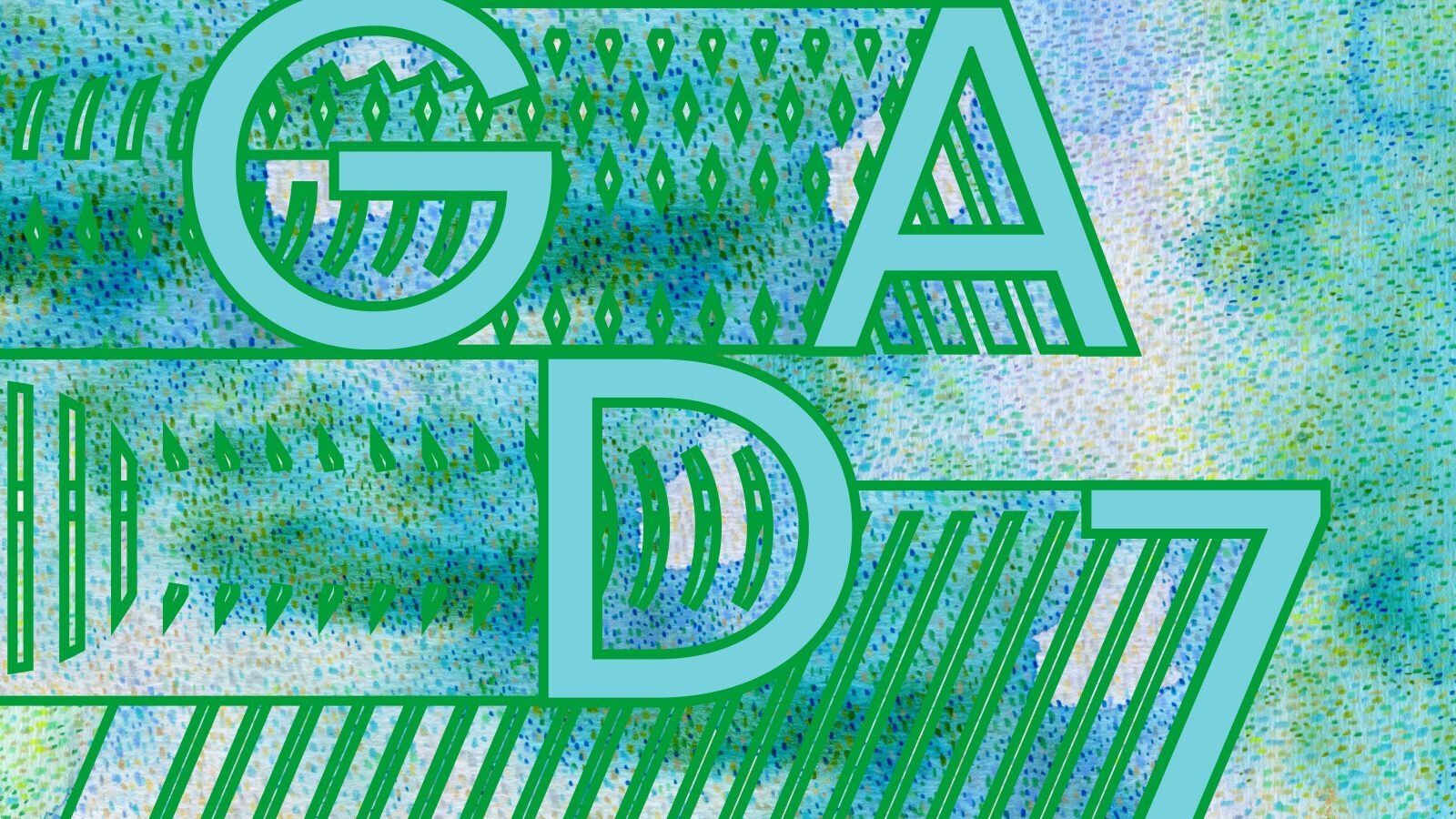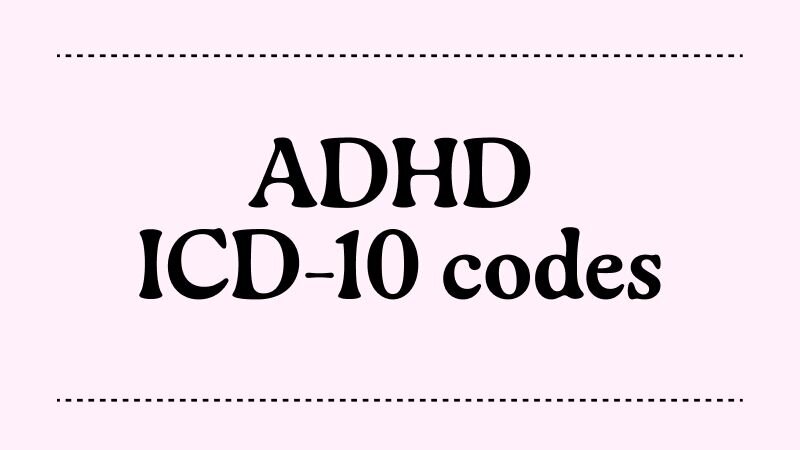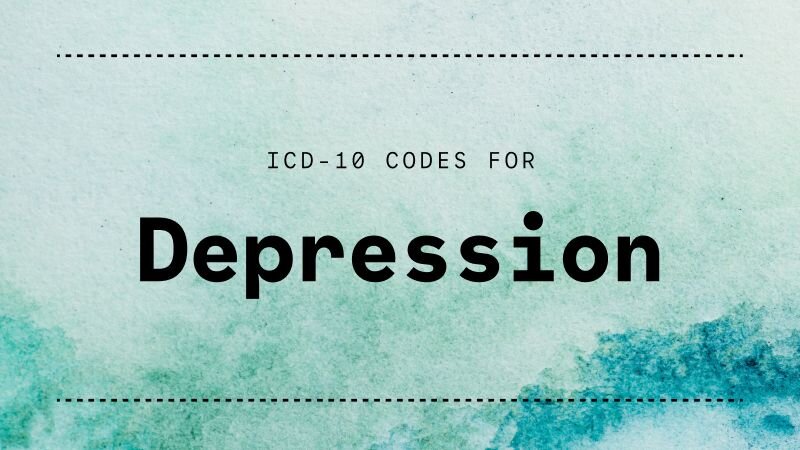
How to use the GAD-7 for anxiety assessment
The GAD-7 can help you narrow down a diagnosis if your client is experiencing anxiety symptoms, along with allowing you to track their progress over time.

There are many ICD-10 codes associated with anxiety disorders. Generalized Anxiety Disorder is most common, but there may be a more precise code that documents your diagnosis more effectively.
Anxiety is a very common concern in mental health treatment, so using the correct and most specific ICD-10 diagnosis code to effectively communicate the client’s presenting symptoms is important, and helps to ensure the billing process will run smoothly for you and your client.
It’s important that you make a clear, accurate and specific diagnosis that is appropriate to your individual patient clinical picture. These examples should be for reference and are not intended to guide a diagnosis. The client must meet diagnostic criteria for the F code they are assigned.
There are many ICD-10 codes associated with anxiety disorders. The most common ICD-10 code related to anxiety — and perhaps the most commonly billed ICD-10 code overall — is F41.1, the code associated with generalized anxiety disorder, or GAD.
F41.1: Generalized anxiety disorder (GAD)
Anxiety that is generalized and persistent but not restricted to, or even strongly predominating in, any particular environmental circumstances (i.e. it is "free-floating"). The dominant symptoms are variable but include complaints of persistent nervousness, trembling, muscular tensions, sweating, lightheadedness, palpitations, dizziness, and epigastric discomfort. Fears that the patient or a relative will shortly become ill or have an accident are often expressed. Criteria requires that the anxiety exists for at least 6 months and is noticeable in a number of events or activities.
Unfortunately, generalized anxiety disorder isn’t often documented appropriately to demonstrate that the criteria has been met. Lack of accurate diagnostic support statements within documentation can be a reason for payer denial, according to Sarah Scheimreif, Clinical Lead Medical Billing and Auditing at Headway. You may also want to consider the criteria for other ICD-10 codes related to anxiety, included below.
While generalized anxiety disorder is the most frequently used code for anxiety, there are other common ICD-10 codes for anxiety associated with specific symptoms and presenting problems. They are included below, along with direct descriptions from the ICD-10.
F41.9: Unspecified anxiety disorder
Anxiety NOS
In this case, “NOS” means “not otherwise specified.” You might select this diagnosis if it’s clear that the client is dealing with a specific type of anxiety, but there isn’t enough information to identify a specific anxiety disorder.
There is a clinical expectation that a clearer diagnostic picture will emerge during the treatment process and this unspecified diagnosis will often, although not always, be replaced with a more accurate and specific diagnosis.
F41.0: Panic disorder
The essential feature is recurrent attacks of severe anxiety (panic), which are not restricted to any particular situation or set of circumstances and are therefore unpredictable. As with other anxiety disorders, the dominant symptoms include sudden onset of palpitations, chest pain, choking sensations, dizziness, and feelings of unreality (depersonalization or derealization). There is often also a secondary fear of dying, losing control, or going mad. Panic disorder should not be given as the main diagnosis if the patient has a depressive disorder at the time the attacks start; in these circumstances the panic attacks are probably secondary to depression.
F42: Obsessive-compulsive disorder (OCD)
The essential feature is recurrent obsessional thoughts or compulsive acts. Obsessional thoughts are ideas, images, or impulses that enter the patient's mind again and again in a stereotyped form. They are almost invariably distressing and the patient often tries, unsuccessfully, to resist them. They are, however, recognized as his or her own thoughts, even though they are involuntary and often repugnant. Compulsive acts or rituals are stereotyped behaviors that are repeated again and again. They are not inherently enjoyable, nor do they result in the completion of inherently useful tasks. Their function is to prevent some objectively unlikely event, often involving harm to or caused by the patient, which he or she fears might otherwise occur. Usually, this behavior is recognized by the patient as pointless or ineffectual and repeated attempts are made to resist. Anxiety is almost invariably present. If compulsive acts are resisted the anxiety gets worse.
F43.2: Adjustment disorders
States of subjective distress and emotional disturbance, usually interfering with social functioning and performance, arising in the period of adaptation to a significant life change or a stressful life event. The stressor may have affected the integrity of an individual's social network (bereavement, separation experiences) or the wider system of social supports and values (migration, refugee status), or represented a major developmental transition or crisis (going to school, becoming a parent, failure to attain a cherished personal goal, retirement). Individual predisposition or vulnerability plays an important role in the risk of occurrence and the shaping of the manifestations of adjustment disorders, but it is nevertheless assumed that the condition would not have arisen without the stressor. The manifestations vary and include depressed mood, anxiety or worry (or mixture of these), a feeling of inability to cope, plan ahead, or continue in the present situation, as well as some degree of disability in 9the performance of daily routine. Conduct disorders may be an associated feature, particularly in adolescents. The predominant feature may be a brief or prolonged depressive reaction, or a disturbance of other emotions and conduct. The diagnosis of an adjustment disorder is only used when another more specific diagnosis and its criteria are not met.
Adjustment disorders may include:
Adjustment disorders must occur within 3 months of the onset of the stressor but shouldn’t be used as a diagnosis for more than six months after the stressor or its consequences have ended, according to DSM 5 -TR. If adjustment disorder symptoms last for longer than six months, the client is likely experiencing a different form of anxiety.
The World Health Organization’s official ICD-10 manual is available online, where you can find a list of anxiety-related codes, listed under F40–F48: “Neurotic, stress-related and somatoform disorders.”
The ICD-10 Database is another source for detailed clinical information about each ICD-10 code. This database is maintained by AAPC, the American Academy of Professional Coders.
Not all ICD-10 codes are accepted for insurance billing. Each insurance company typically has its own specific guidelines for claim submission, and have lists of covered and non-covered codes, so it’s important that you stay up to date with the billing requirements of the insurance plans you’re credentialed with to ensure the codes you’re using are supported for reimbursement.
The ICD-10 is a coding system developed by the World Health Organization (WHO) for the classification of diseases and other health-related conditions. The alphanumeric codes in the ICD-10 are used by healthcare providers and insurance companies to represent disorders and other health conditions for the purpose of standardizing medical records and billing.
Its name, ICD-10, stands for the International Classification of Diseases 10th Edition; the 10th edition was endorsed in 1990 to replace the ICD-9, and fully adopted in the United States by October 1, 2015.
The DSM-5 (Diagnostic and Statistical Manual of Mental Disorders, Fifth Edition) and the ICD (International Classification of Diseases, Tenth Revision) are both classification systems used in the diagnosis of mental health disorders, but they have different origins, purposes, and scopes.
The DSM-5 is published by the American Psychiatric Association (APA), is used primarily in the United States, and focuses exclusively on mental disorders.
The ICD-10 is published by the World Health Organization (WHO), is used worldwide, and covers all health-related issues, not just mental disorders.
The DSM-5 is compatible with the ICD-10 coding system now in use by many insurance companies. Because it has a narrower scope, the DSM-5 includes more detail about the diagnostic criteria for mental disorders. The criteria included in the DSM-5 can be used to diagnose mental health disorders, and documentation should demonstrate the support of this diagnostic criteria.
This document is intended for educational purposes only. It is designed to facilitate compliance with payer requirements and applicable law, but please note that the applicable laws and requirements vary from payer to payer and state to state. Please check with your legal counsel or state licensing board for specific requirements.

The GAD-7 can help you narrow down a diagnosis if your client is experiencing anxiety symptoms, along with allowing you to track their progress over time.

A client presenting the symptoms of ADHD will most commonly be diagnosed with a specifier code that provides detail about how their symptoms present.

Here are some of the most common ICD-10 codes associated with depressive symptoms, with different criteria for frequency, severity, and other features.